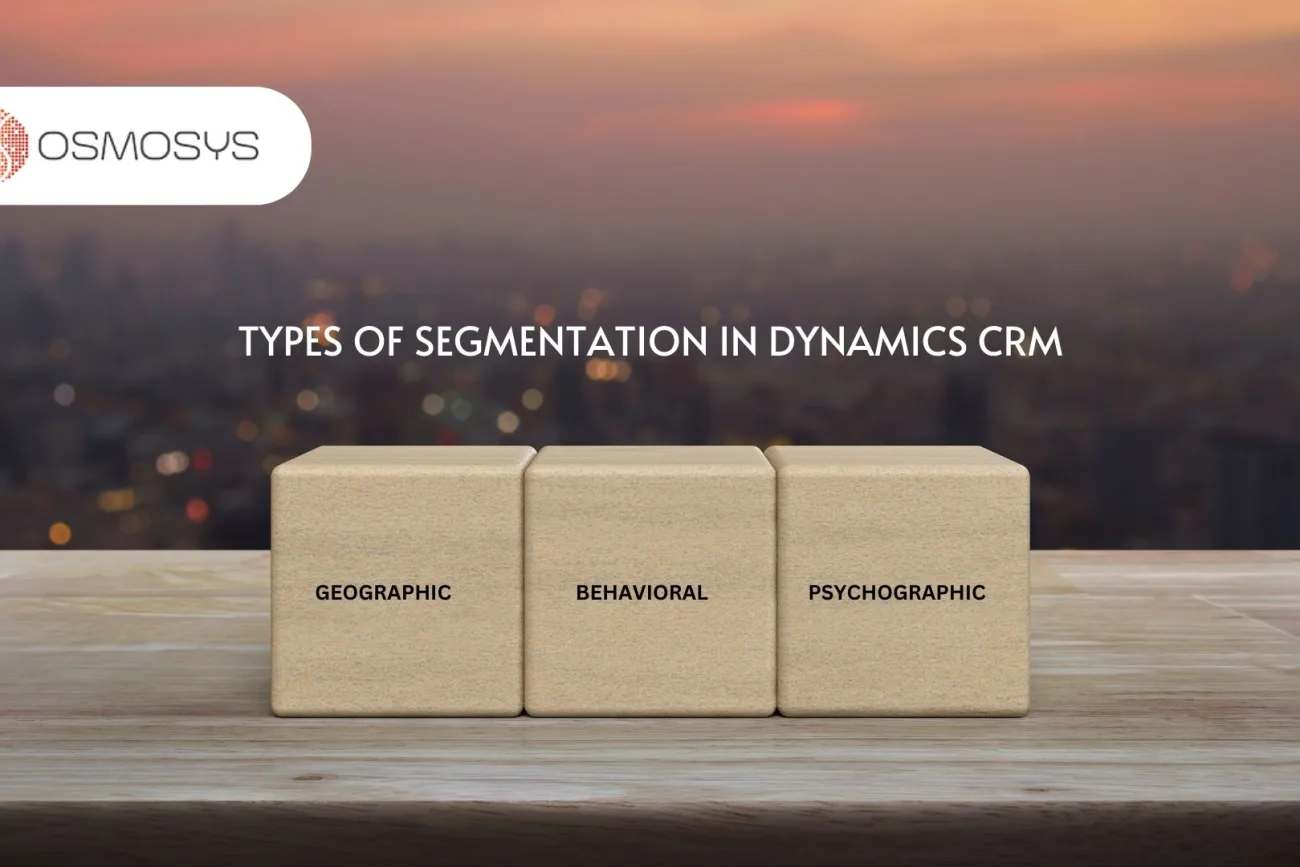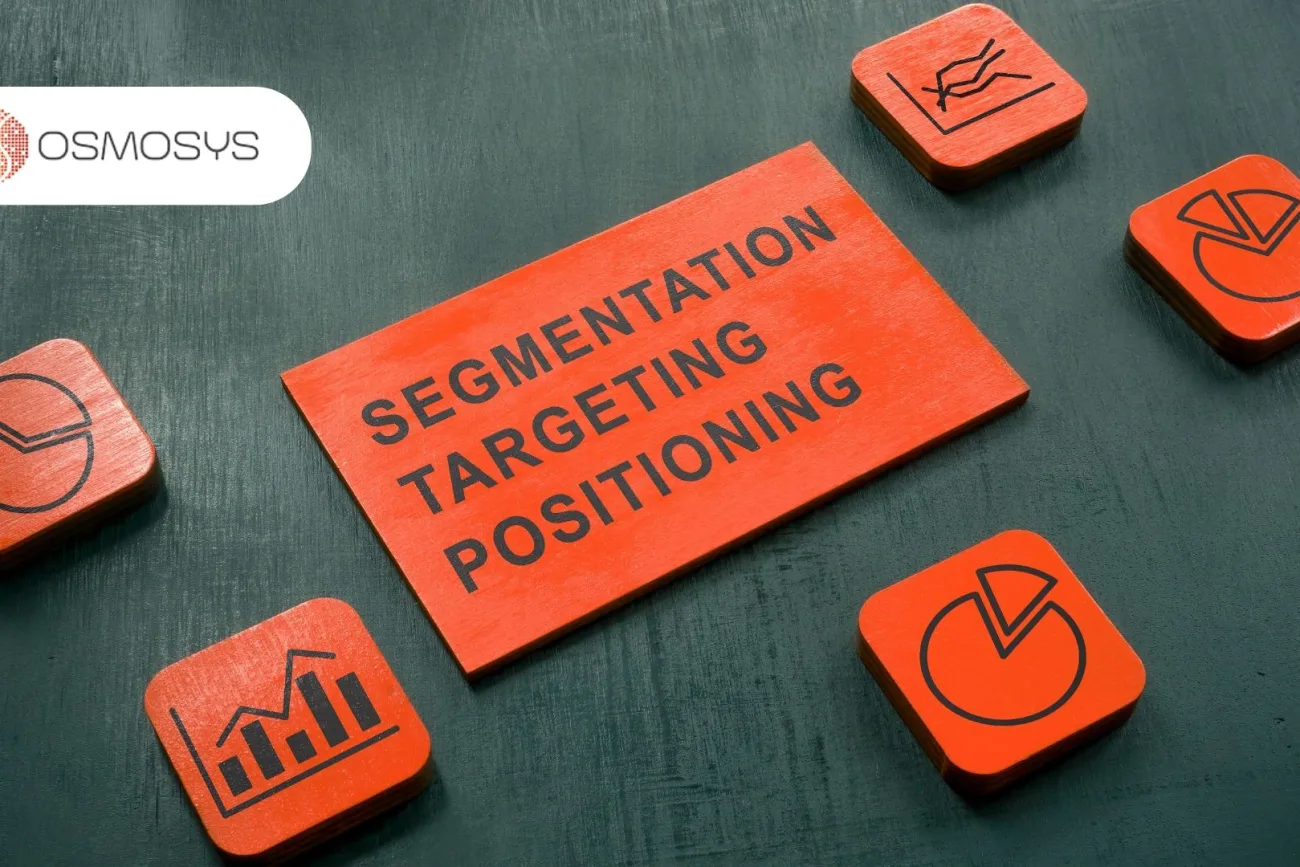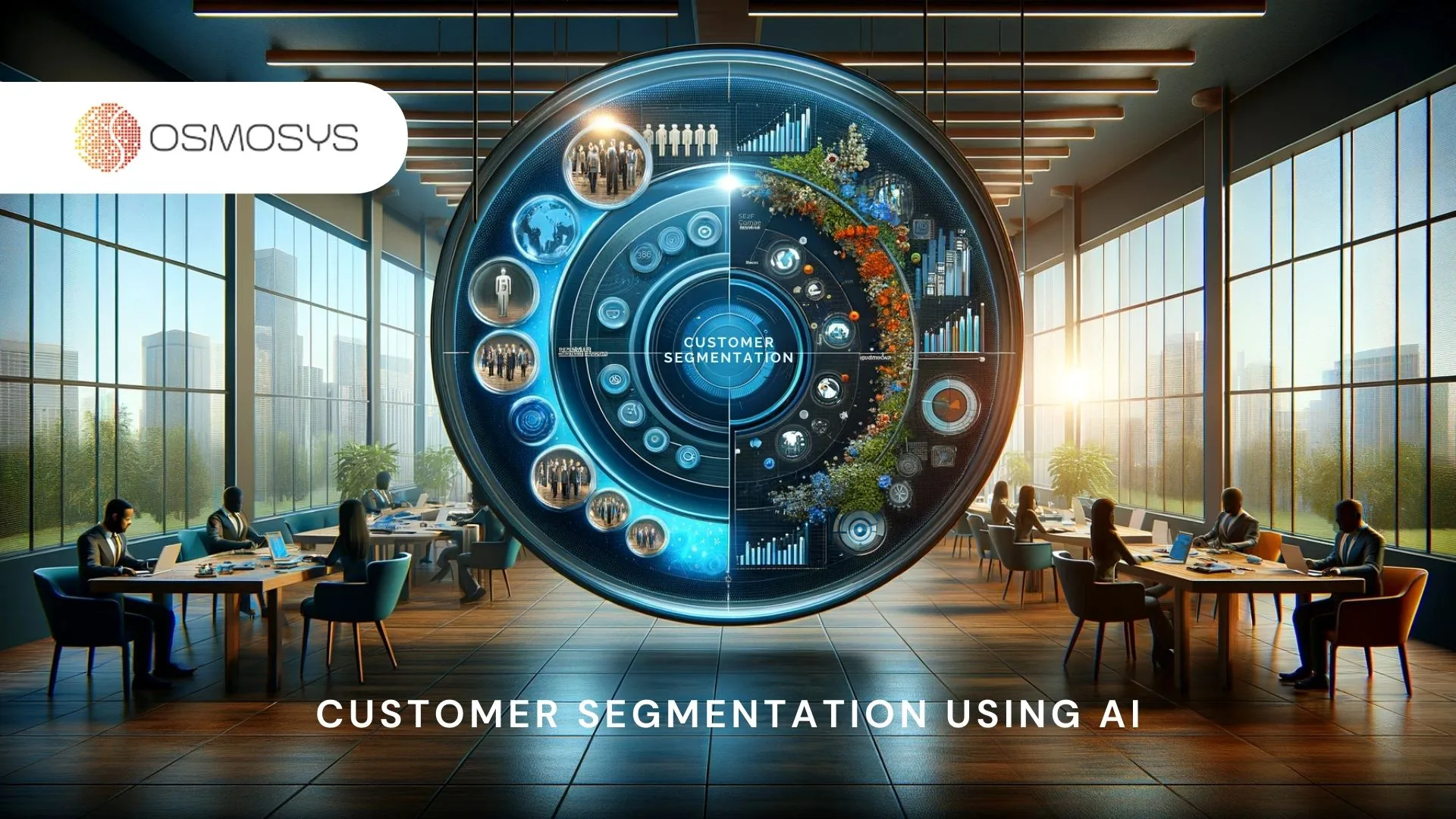Customer segmentation is the process of grouping customers into specific subsets based on common characteristics such as demographics, interests, needs, or behaviors. The goal is to target each segment effectively and optimize the customer experience. With the rise of big data and AI, businesses now have access to more customer data than ever before, enabling more strategic and personalized segmentation.
For companies using CRM systems like Microsoft Dynamics 365, AI-powered customer segmentation unlocks major opportunities to improve sales, marketing, and customer service. By leveraging AI and machine learning algorithms, Dynamics 365 can continuously analyze customer data to identify key segments and patterns. This level of agility and automation simply isn’t feasible with manual segmentation alone.
Microsoft Dynamics 365 is one of the leading CRM platforms, providing sales, marketing, service, and other business tools via the cloud. With built-in AI capabilities like Customer Insights and integration with services like Azure Cognitive Services, Dynamics 365 empowers businesses to segment customers intelligently based on attributes like demographics, behavior, sentiment, channel preferences and more.
AI-powered customer segmentation helps Dynamics 365 users optimize the customer journey at every touchpoint. More informed and strategic engagement leads to better experiences for customers and higher ROI for businesses. This advanced segmentation is a key benefit that positions Dynamics 365 as an intelligent CRM leader.
Table of Contents
Benefits of Customer Segmentation

Customer segmentation allows businesses to divide customers into groups based on common characteristics so they can market to each group more effectively. There are several key benefits to segmenting your customer base using AI tools:
More targeted marketing
By understanding the various needs, interests, and pain points of different customer groups, companies can create and deliver more relevant, personalized messaging and offers. Targeted marketing leads to higher conversion rates and happier customers.
Better customer experiences
Brands can tailor products, services, and communications for each segment. They can address specific pain points and provide targeted solutions, leading to more positive customer experiences. Satisfied customers are more likely to trust your brand and remain loyal.
Increased sales and revenue
With differentiated and tailored marketing, brands can increase conversion rates from various segments. They can upsell/cross-sell to each group based on specific needs or interests. Overall this leads to boosted sales and revenues. The more insight you have into your customers, the better you can sell to them.
Challenges of Manual Customer Segmentation

The traditional approach to customer segmentation has been a manual process relying on human analysis. This brings a number of inherent challenges:
Very time consuming: Marketing and sales teams would have to spend countless hours going through customer data, trying to identify patterns and group customers into segments. As new customer information comes in, the process has to start over again.
Difficult to gain insights: With thousands or even millions of customers, it is extremely difficult for humans to process all that data, spot trends and derive meaningful insights. Marketers end up grouping customers using basic attributes like demographics, but miss out on key behavioral and predictive insights.
Outdated data: In today’s digital age, customer data is being generated and updated continuously in multiple systems across the organization. By the time marketing teams complete the manual analysis, much of the data is already outdated. This makes it hard to create an accurate segmentation.
How AI Enables Segmentation in Dynamics CRM
Customer segmentation allows organizations to divide customers into groups based on common characteristics so they can market to them more effectively. Doing this manually is incredibly time and labor intensive. AI and machine learning capabilities in Dynamics CRM streamline the process through automated clustering algorithms.
These algorithms can analyze large amounts of customer data across various dimensions like demographics, behavior, preferences, and more. The algorithms identify key patterns and attributes in the data to segment customers.

Some key benefits of AI-powered segmentation in Dynamics CRM include:
Faster creation of segments – Rather than manually analyzing data to create segments, which can take weeks or months, algorithms can generate segments in hours or days. This enables more rapid and iterative segmentation.
More sophisticated segments – Algorithms can identify nuanced patterns across multidimensional datasets that humans may miss. This results in segments with greater precision.
Continuous updates – As new customer data comes in, algorithms automatically update segments based on the latest information. This keeps segments current instead of static snapshots based on past data.
Scalability – AI models can efficiently analyze datasets with millions of customers and thousands of data points. This makes large-scale segmentation feasible.
With AI and machine learning handling the heavy lifting, marketers can focus less on segment creation and more on activating personalized engagement campaigns based on data-driven groups. AI empowers marketers to keep up with the scale and complexity of customer data.
Types of Segmentation in Dynamics CRM
Microsoft Dynamics CRM supports several common types of customer segmentation to help businesses better understand and target their customers.
Demographic Segmentation
Demographic segmentation categorizes customers based on descriptive attributes like age, income, education level, gender, occupation, marital status, or family size. Using demographic data, businesses can create customer profiles and target marketing campaigns towards certain groups.
For example, a clothing retailer may create segments for young female professionals, middle-aged suburban mothers, and elderly couples to market different products to each group.

Geographic Segmentation
Geographic segmentation divides customers by location-based attributes like country, region, city, climate, or population density. Location and cultural preferences impact customer behavior, so geographic segments allow for localized marketing.
Businesses may have customer profiles for each major city or separate segments for domestic versus international customers. Location data also facilitates supply chain and logistics planning.
Behavioral Segmentation
Behavioral segmentation groups customers by how they interact with a company and its products. Relevant factors include purchase frequency, channel preferences, spending habits, usage patterns, loyalty status, and product interest.
Segments could be made for big spenders versus bargain hunters, or frequent versus occasional buyers. Identifying behavioral segments helps convert new prospects and upsell existing customers.
Psychographic Segmentation
Psychographic or lifestyle segmentation analyzes customer personalities, attitudes, interests, and values. It goes beyond demographics to uncover why customers make certain choices.
For example, segments may be created for eco-friendly customers, health-conscious mothers, or adventure-seeking young adults. Psychographic insights help craft marketing messages that resonate.
Key Data Sources for Segmentation
Customer segmentation relies on gathering the right data from various sources to identify clusters and patterns. The key sources of customer data for segmentation analysis in Dynamics CRM include:
Demographics
Collecting demographic data like age, gender, location, income level, education, marital status, household size, etc. can reveal insights for segmentation. Certain customer groups may exhibit similar demographic attributes that impact their needs and behaviors. Demographics can be captured directly during sign-ups or surveys.
Purchase History
Analyzing details of past purchases, order values, products/services purchased, frequency, recency, etc. provides a perspective on customer value and churn risk. Combining purchase history with demographics can uncover additional patterns. This data builds up over time as customers transact through Dynamics CRM.
Website Activity
Monitoring how customers navigate, search, click, and interact on a company’s website offers segmentation cues based on interests and engagement. Web analytics integrated with Dynamics CRM produces user profiles ideal for segment analysis. Site activity combined with CRM data gives a 360-degree customer view.
Email Engagement
Tracking email open rates, click-throughs, and survey responses demonstrates customer interest levels in communications. Email metrics can feed into segmentation to define groups for tailored messaging. Dynamics CRM captures this data from integrated email marketing platforms.
Service Interactions
Records of service calls, cases, complaints, and other customer service touchpoints signify levels of satisfaction. Segmenting on service history traits like frequency, resolution time, escalation rate, sentiment, etc. helps identify at-risk or high-value customers. Dynamics CRM logs all service interactions for complete history.
By consolidating data from multiple sources into Dynamics CRM, businesses enable precise segmentation across any combination of attributes using AI capabilities. The key is collecting quality customer data over time across every engagement channel.
Best Practices

When implementing customer segmentation in Dynamics CRM, follow these best practices:
Align segments to business goals – Ensure your segments map to strategic goals like increasing sales or reducing churn. Avoid segments that don’t directly inform business objectives.
Test and iterate segments – Start with a pilot segmentation approach, monitor performance, and refine based on results. Regularly revisit and update segments to reflect changing customer behaviors.
Keep segments actionable – Craft segments that connect to tangible next steps like targeted messaging and customized experiences. Overly broad or vague segments have less value.
Prioritize quality data – Accurate segmentation relies on quality customer data and attributes. Invest in improving data hygiene for maximum segmentation success.
Combine data types – Layer behavioral, demographic, and transactional data for a multidimensional view of customers. Derive richer insights from data intersection.
Focus on customer lifetime value – Orient core segments around high-value customers instead of isolated transactions. This drives more impactful segmentation.
Automate processes – Use Dynamics CRM workflow automation to assign segments, trigger actions, and keep segments up-to-date. This saves time and effort.
Measure ROI – Track segment performance through metrics like engagement, conversions, and revenue. Continually optimize to deliver ROI from segmentation.
Dynamics CRM Segmentation Use Cases

Contoso Ltd, a manufacturing company with 5,000 customers, leveraged Dynamics 365’s segmentation capabilities to better understand and serve their customers.
By analyzing purchase history, demographics, and engagement data within Dynamics, they built segments to target specific campaigns and offers. Key benefits included:
– Increased sales of 20% from hyper-targeted promotions to high-value customers
– Higher email open rates by segmenting based on engagement
– Reduced churn by identifying at-risk customers based on purchase recency
Contoso created a “Loyal Customers” segment for those with over 5 years of purchase history. This segment received exclusive offers and early access to new products. For the “At Risk” segment, Contoso sent re-engagement campaigns with special discounts, lowering churn by 10%.
Overall, Contoso achieved a 15% lift in revenue and improved customer retention by leveraging Dynamics 365’s segmentation. The actionable insights allowed them to precisely target and customize interactions for maximum impact.
Limitations and Considerations

While customer segmentation powered by AI in Dynamics CRM provides significant benefits, there are some limitations and considerations to keep in mind:
Data Quality Issues
The quality of the segments generated is highly dependent on the quality of the data within Dynamics CRM. Issues like incomplete customer profiles, inaccurate or outdated data, and inconsistencies can impact the segmentation. Data cleansing and governance processes are important to maximize the value of segmentation.
Ongoing Maintenance of Segments
Segments are not static – as new data comes in and customers’ attributes and behaviors change over time, the segments will need to be refreshed and may change. Processes must be established to periodically review and update segments as needed.
Integrations with Other Systems
Dynamics CRM may not contain a full view of customer data if it is not integrated with other systems like billing, support ticketing, ecommerce, and more. Important segmentation data living in disconnected systems can lead to incomplete segments. Tight integration between Dynamics CRM and other systems is key.
The limitations underscore the need for a holistic customer data foundation spanning systems and teams as a base for accurate advanced segmentations. With reasonable data quality and maintenance processes in place, AI-powered segmentation can provide powerful differentiated customer experiences.
Conclusion
Customer segmentation enabled by AI provides significant benefits for organizations using Dynamics CRM. By leveraging the powerful analytics and automation capabilities of AI, companies can gain deeper insights into their customers and provide personalized experiences that drive growth.
Key takeaways include:
AI empowers companies to automate and scale segmentation versus manual, time-consuming processes. This allows more segments with greater complexity.
Dynamics CRM offers built-in segmentation tools like customer profiles and segments that can leverage AI-driven insights. This helps companies identify their most valuable customers.
Data from CRM and other sources like email, social media and transactions can be used by AI to uncover hidden patterns and behaviors. This enables precise targeting.
Segments help companies send targeted messaging, promotions and product recommendations that delight customers. AI optimization further improves results over time.
While AI segmentation has limits and requires thoughtful implementation, overall it enables organizations to build better customer experiences and accelerate growth.
With the power of AI-enabled customer segmentation, companies using Dynamics CRM can gain actionable insights to serve their customers better than ever before. Though approaching thoughtfully, AI allows organizations to truly transform customer experiences and business outcomes.


